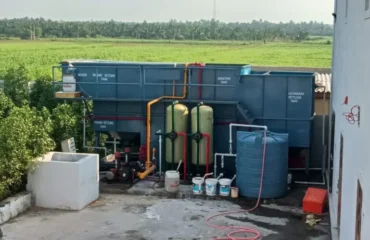The Sewage Treatment Plant (STP) in Sagar is a crucial infrastructure that plays a significant role in managing wastewater and promoting environmental sustainability. This article explores the importance of the STP in Sagar, its operational processes, environmental benefits, challenges, and future prospects.
Introduction to Sewage Treatment Plants (STPs)
STPs are essential facilities designed to treat sewage and wastewater from various sources, including residential, commercial, and industrial areas. In Sagar, the presence of an STP is critical for ensuring clean waterways, public health, and environmental protection.
Significance of the STP in Sagar
The STP in Sagar serves several key purposes:
- Environmental Protection: By treating sewage before discharge, the STP prevents water pollution and safeguards natural water bodies such as rivers and lakes.
- Public Health: Proper treatment of sewage reduces the risk of waterborne diseases, contributing to a healthier population.
- Resource Conservation: Treated wastewater can be reused for non-potable purposes such as irrigation, reducing the demand for fresh water resources.
Operational Process of the STP
The STP in Sagar follows a systematic process:
- Collection: Wastewater from residential, commercial, and industrial sources is collected and transported to the STP via sewer systems.
- Preliminary Treatment: Initial treatment involves the removal of large debris, grit, and solids through screening and sedimentation processes.
- Primary Treatment: Solid particles are further settled out, and scum is removed, reducing the organic load in the wastewater.
- Secondary Treatment: Biological processes using microorganisms break down organic matter, reducing pollutants and pathogens.
- Tertiary Treatment: Advanced treatment methods such as filtration and disinfection ensure the removal of remaining contaminants, producing treated water that meets quality standards.
Environmental Benefits
The STP in Sagar provides significant environmental advantages:
- Water Quality Improvement: Treated water meets regulatory standards, ensuring that discharged water does not harm the environment.
- Ecosystem Protection: Reduced pollutants in wastewater contribute to the preservation of aquatic ecosystems and biodiversity.
- Resource Reuse: Recycled water from the STP can be utilized for various purposes, promoting water conservation.
Challenges and Future Prospects
Despite its benefits, STPs face challenges such as operational costs, maintenance requirements, and technological upgrades. However, ongoing advancements in treatment technologies and management practices offer opportunities for improved efficiency and sustainability in the future.
Conclusion
The STP in Sagar plays a vital role in wastewater management, environmental conservation, and public health. Through effective treatment processes and continuous improvements, the STP contributes significantly to a cleaner and healthier environment for the community.


